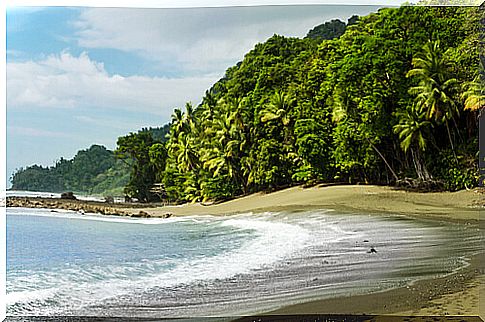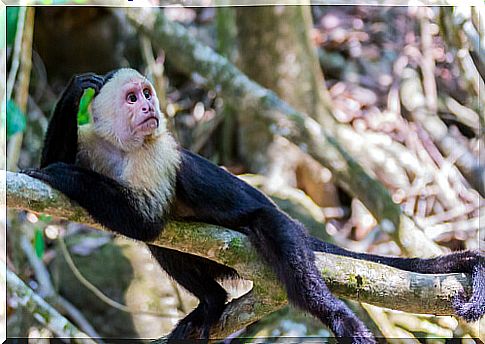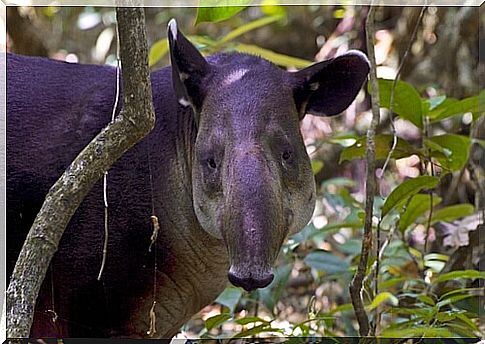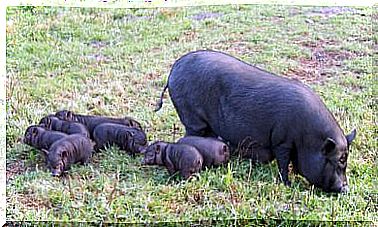Get To Know The Fauna Of Corcovado National Park (Costa Rica)

We propose a tour of the Corcovado National Park, one of the most biologically diverse that Costa Rica has. In a wonderful environment of virgin tropical forest inhabit a great variety of animals, some in danger of extinction, including birds, mammals, insects, amphibians and reptiles. It also stands out for its marine fauna.
Some facts about this natural reserve
Created in 1975, the park is located on the Osa Peninsula, in the southwest of this Central American country. It is about 350 kilometers from San José, the Costa Rican capital. And it is considered a natural laboratory, ideal for studying tropical ecosystems and the relationships between them.
According to National Geographic, we are facing the most biologically intense place on the planet. And it is that its 42,560 land and 3,354 marine hectares are home to 2.5% of the planet’s biodiversity.
A landscape of forests, large expanses of uninhabited beaches and sound waterfalls, make Corcovado a natural reserve of undoubted beauty. As far as fauna is concerned, we can point out that it has around:
- 140 species of mammals
- 400 species of birds, 20 of them endemic
- 40 species of freshwater fish
- 117 species of amphibians
- 10,000 types of insects
- 28 species of lizards

The mammals of Corcovado National Park
If you visit the Corcovado National Park, you will find the four species of monkeys in Costa Rica, most of them at risk of extinction due to deforestation and hunting. They are:
- Howler, also called Congo
- Cappuccino or cariblanco (photo)
- Spider or red
- Squirrel or marmoset
In addition, there are five of the six wild cats that inhabit the country:
- Ocelot
- Tigrillo or tiger leopard
- Jaguarundí or ounce
- Cougar
Other mammals in the reserve
In this reserve are most of the few Baird’s tapirs or tapirs (photo) that remain in Costa Rica. There are also specimens of mountain pigs or peccaries, animals in danger of extinction due to habitat degradation and hunting.

Among the most abundant mammals in the country, on the other hand, in the reserve are the three-toed sloths and the coatis. The latter resemble raccoons and have a thin, striped tail and an elongated nose.
Also observed are:
- Deer
- Agoutis or pacas, a genus of rodents
- Anteater
- River otters
- Bats
These are the birds of Corcovado
Scarlet macaws (photo), victims of poaching, can be seen in this magnificent reserve. But in addition, in the estuaries and in the Corcovado Lake there is an important variety of herons, including the Chocuaco or Pico de Bota.

The harpy eagle are also observed, he thought to be extinct in the area, and re buzzard and , a sort of American vulture. And let’s not forget the 16 species of hummingbirds.
Other birds in the park are:
- White hawk
- Water cock
- Grenadier kettle
- Wild hen
- Purple pigeon
- Bicolor billed toucan
Reptiles, amphibians and insects
Reptiles and amphibians also abound in the Corcovado. There are 40 species of frogs. Among them: green with red eyes, glass and poison dart or arrowhead. Crocodiles and alligators reign in the park’s lake and estuaries.

Among the snakes, the boa constrictor, the velvet and the lachesis, also called the silent rattlesnake, stand out. Of the iguanas stands out the so-called garrobo (photo), which looks like a small dinosaur with the ability to slide through water.
Spiders also abound with their spider webs of various forms. And, of the great variety of insects that the park houses, we highlight:
- 100 species of butterflies
- Zompopas or arrieras ants, which are distinguished by the paths that they trace carrying pieces of leaves
- Legionnaire ants, the voracious hunters made famous by the movie When the Crowd Roars
- Chicarras or cicadas, which will deafen you with their song
Marine fauna of Corcavado National Park
It is also good to highlight the marine fauna of the place. On the beaches of Corcovado National Park there are nesting sites for four species of turtles :
- Tortoiseshell
- Golfina or Gulf
- Green
- Lute or leatherback
On the other hand, on the rocky shores, there are large numbers of sea snails and crabs, such as the red and the hermit (photo). And in the sea there are sharks such as bulls and some species of dolphins. Likewise, the Dulce Gulf (east of the park) is a breeding area for humpback whales.









